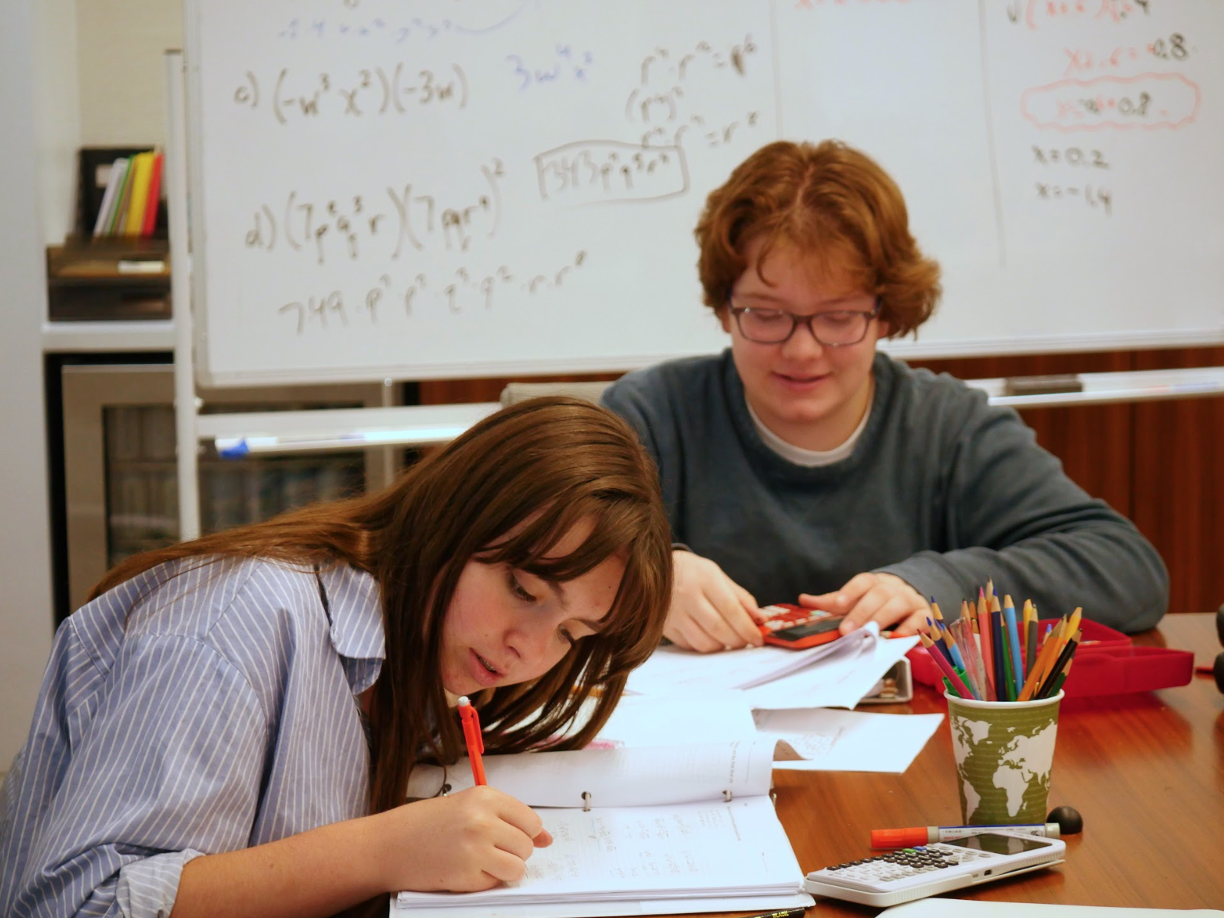“Are estimating skills an important thing? Like, if we were to pursue this in college, would we keep doing it more?”
9th Grade mathematicians in US Math 2 worked on logarithmic functions and representations of growth this week, using various real-world contexts, including some they playfully invented: “I pretended 4000 was a number of burgers and then I guess he eats some more burgers each time, so then if you plug this in [4000(1.005)^12] you get a number. But I don’t know. I’m having trouble with the infinity part.”
I pretended 4000 was a number of burgers and then I guess he eats some more burgers each time, so then if you plug this in [4000(1.005)^12] you get a number. But I don’t know. I’m having trouble with the infinity part.
Students took apart and put equations back together to make sense of their pieces. “If I just did 4000(1.005), then it would be the number after one month. So….” Using Desmos, calculators, hand tools, and one another, students presented their work and their questions on a range of problems dealing with logs, roots, and fractional and negative exponents. Their teacher supported them to find patterns that would help them discover rules or decide between possible answers that seemed confusing. And often, students explained problems in a new way to one another, sparking understanding. “My explanation was like this [writes how 10^1*10^1=10^2, so then 10^(1/2)*10^(1/2)=10^1]. So that’s how I knew 10^(1/2) is root 10.”
As their teacher guided them to derive a property of logs, one student asked “Now that we can do log in base other than 10, why is the calculator only setup to do that in the ‘Math’ section?” This led to a conversation about how prior limitations in calculator abilities helped to dictate the division between Algebra 1 and Algebra 2 and their traditional sequencing with Geometry between them. In our Upper School, students take a three year integrated math sequence, weaving across domains of algebra, geometry, pre-calculus, introductory statistics, and intro computer coding. In this way, their fluency and flexibility with math deepens, content spirals, and students find themselves again and again realizing that something they already know will help them in a place where they currently feel stuck.

